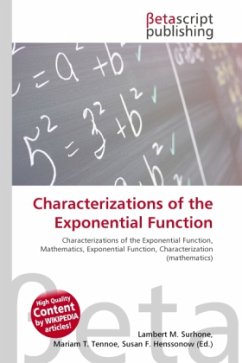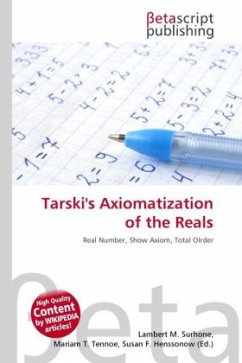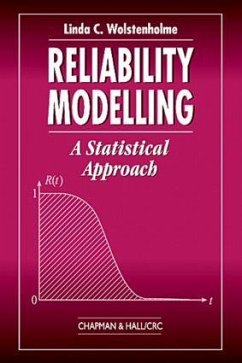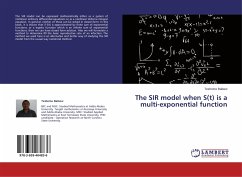
Tarski's Exponential Function Problem
Versandkostenfrei!
Versandfertig in 6-10 Tagen
23,99 €
inkl. MwSt.

PAYBACK Punkte
12 °P sammeln!
High Quality Content by WIKIPEDIA articles! Tarski's circle-squaring problem is the challenge, posed by Alfred Tarski in 1925, to take a disc in the plane, cut it into finitely many pieces, and reassemble the pieces so as to get a square of equal area. This was proven to be possible by Miklós Laczkovich in 1990; the decomposition makes heavy use of the axiom of choice and is therefore non-constructive. Laczkovich's decomposition uses about 1050 different pieces. In particular, it is impossible to dissect a circle and make a square using pieces that could be cut with scissors (that is, having ...
High Quality Content by WIKIPEDIA articles! Tarski's circle-squaring problem is the challenge, posed by Alfred Tarski in 1925, to take a disc in the plane, cut it into finitely many pieces, and reassemble the pieces so as to get a square of equal area. This was proven to be possible by Miklós Laczkovich in 1990; the decomposition makes heavy use of the axiom of choice and is therefore non-constructive. Laczkovich's decomposition uses about 1050 different pieces. In particular, it is impossible to dissect a circle and make a square using pieces that could be cut with scissors (that is, having Jordan curve boundary). The pieces used in Laczkovich's proof are non-measurable subsets. Laczkovich actually proved the reassembly can be done using translations only; rotations are not required. Along the way, he also proved that any simple polygon in the plane can be decomposed into finitely many pieces and reassembled using translations only to form a square of equal area.












